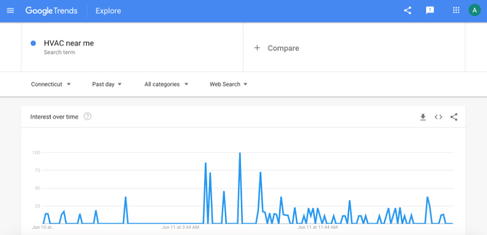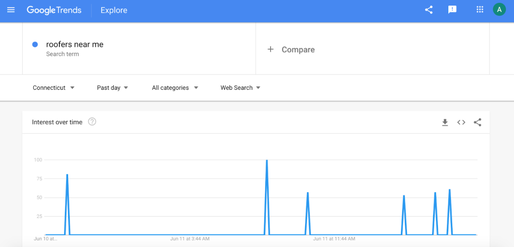A Guide to Google’s Disavow Tool
Bad backlinks will bring your sites credibility down. In turn, good backlinks will increase your site’s reputation. How do we decide which links point to our side?
Using this tool without proper knowledge between good and bad links and be very harmful to your sites standing.
The purpose of this article is to provide a history of the disavow tool, explain how you use it and define the difference between good and bad links.
The purpose of this article is to provide a history of the disavow tool, explain how you use it and define the difference between good and bad links.
Created in 2012, Google’s Disavow Links Tool lets you tell Google to ignore specific backlinks for ranking purposes.

The decision making that goes behind choosing which links should be disavowed and those that should be kept is very complicated. Google’s intent behind creating this tool was to clean up spammy looking links to garbage or irrelevant sites. Google had created a sort of prototype of this technique in 2005 by introducing Years later, to serve as an improvement upon this Google released Google
the “nofollow” attribute . As the name suggests, you would use this tool to label links and spammy link comments as “no follow” to tell the Google crawlers not to trace back to their link.
Penguin algorithm .
the “nofollow” attribute . As the name suggests, you would use this tool to label links and spammy link comments as “no follow” to tell the Google crawlers not to trace back to their link.
Penguin algorithm .

Penguin served as a filter which all search results had to pass through before being presented to a user. Though this algorithm was not without kinks. Some of these links which Penguin would scan and then deem unfit to present would be penalized. Sadly, since it was not perfect some non malicious sites would get penalized and the penalty would exist for months before being resolved. Google search console would alert webmasters if there was a pattern of unnatural or deceptive looking outbound links.This penalty could have such an effect on a site that when a single webpage was demoted, the entire site would feel the wrath.Google noticed this and attempted to adhere to the savvy web builders like you and provide us with more control over our sites. Thus the disavow tool was born!
In this first version of the tool, webmasters gained the ability to manually disavow links which they deemed as spam but ONLY after Google’s automated methods had been exhausted.
So next came the question is disavowing necessary? And if so when?
In this first version of the tool, webmasters gained the ability to manually disavow links which they deemed as spam but ONLY after Google’s automated methods had been exhausted.
So next came the question is disavowing necessary? And if so when?
What constitutes a “bad guest post” Or a “bad” directory as compared to good ones?
“ Any links intended to manipulate PageRank or a site’s ranking in Google search results may be considered part of a link scheme and a violation of Google’s Webmaster Guidelines. This includes any behavior that manipulates links to your site or outgoing links from your site.””Links are usually editorial votes given by choice, and the more useful content you have, the greater the chances someone else will find that content valuable to their readers and link to it.”
A good collection of principles to keep in mind are as follows:
Does this link bear any relevance to my business or could in some way benefit my site users?
Is the soul purpose of this link to increase my SEO standing?
Is there potential to generate customers from this backlink?
High quality links are rewarded for good organic content. Again another quote from Google
A good collection of principles to keep in mind are as follows:
Does this link bear any relevance to my business or could in some way benefit my site users?
Is the soul purpose of this link to increase my SEO standing?
Is there potential to generate customers from this backlink?
High quality links are rewarded for good organic content. Again another quote from Google
As I’m sure you and most of our SEO community agree, these two quotes seem very subjective.
As I’m sure you and most of our SEO community agree, these two quotes seem very subjective.

Still, some links are inherently bad and taking the time to investigate their individual pages and root domain can help to see if they are coming from any sort of link building service or not.
While some paid links may be difficult to detect, there are a few red flags: Google has begun taking action Private blog networks are groups of people who have reached an agreement to participate in link sharing to one another’s websites. These blogs often have exact anchor text that can quickly tip off Google. When looking at which directories you’d like to include your business on, ask yourself this. “Do I trust this service to present my business to users and will users even be able to visit this directory? If the answer is no then the directory is most likely low quality.This fall off to this method is time. This process can be very difficult to automate making it inefficient. Not to mention most sites now make their comment section “no-follow.”This is our most straightforward example, obviously. You want nothing to do with a website which appears to be compromised. These are the big bad hackers Google is looking to take down and you wouldn’t want to be on the ship with them when it sinks. (It’s illegal) Negative SEO is the most common and malicious practice of poor link building. There are services which can be used to send hundreds of backlinks to a website in a short amount of time in order to frame you as paying for them yourself.
- Dofollow site-wide links with exact-match anchor text;
- Dofollow links from unrelated sites/content;
- Dofollow links from pages with obvious footprints such as “Sponsored Post.”
This can be done with the intent to knock down your website, usually led by a competitor with something to gain.
Originally published at https://www.madmangomarketing.com.




